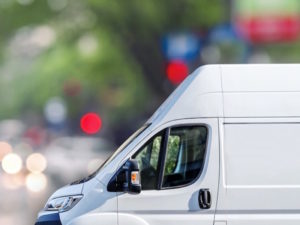The growing number of vans on the roads is bringing “considerable challenges” for cities and urban areas, including poor air quality and congestion, according to a new report.

Published by the Urban Transport Group – a group of transport operators – the report sets out how 3.8 million vans are now registered in the UK, up by 74% since 1996, with vans now representing 15% of all motor vehicle traffic, compared to just 10% 20 years ago. The growth in vans has been credited to the rise of online shopping deliveries and lighter regulation for vans when compared to HGVs.
The report also sets out that vans make up 15% of road traffic but contribute 30% of nitrogen oxide (NOx) emissions from road transport – the second biggest road transport contributor after cars – and 16% of carbon dioxide (CO2) emissions.
However, the report also highlights the vital economic contribution of the vans sector, which is a ‘significant source’ of employment (with over 250,000 people employed as van drivers) and facilitates business activities beyond the logistics sector.
The report explores some of the ways developments by companies and authorities to cut emissions, including green delivery slots, but acknowledges that more research and analysis is still needed. It also sets out that van efficiency improvements are being outstripped by the growth in van use and mileage, and the trend to larger vehicle
The report also covers some of the congestion aspects and encourages more work on rethinking journeys through the ‘four R’s approach’ – reducing the number of journeys while also rerouting, retiming and re-moding them.
The research also touches upon the subject of safety, outlining how there’s “significant levels of illegal operation” – DVSA data sets out how 10,800 vans are stopped at the roadside each year, of which 88.5% are overloaded, 63% have serious mechanical defects and 50% fail their MOT – but that vans have a lower rate of accidents per mile than other road vehicles. It also explores the work carried out by schemes such as FORS, including its work on educating on counter terrorism.
Laura Shoaf, managing director of transport for West Midlands, and lead board member for the Urban Transport Group on freight, said: “Van traffic is the fastest growing element of road traffic in the UK and this growth is set to continue.
“Gaining a better understanding of how and why van traffic is growing, who owns, manages and uses these vehicles and what their journey purpose is, would allow policy makers to better grasp the issues and develop responses. Technology and data may offer opportunities to further improve our understanding.”
To access the report, click here.
For more of the latest industry news, click here.


